<iframe style="width:120px;height:240px;" marginwidth="0" marginheight="0" scrolling="no" frameborder="0" src="//ws-na.amazon-adsystem.com/widgets/q?ServiceVersion=20070822&OneJS=1&Operation=GetAdHtml&MarketPlace=US&source=ss&ref=as_ss_li_til&ad_type=product_link&tracking_id=peaceinvesting-20&language=en_US&marketplace=amazon®ion=US&placement=0060555661&asins=0060555661&linkId=80f8e3b229e4b6fdde8abb238ddd5f6e&show_border=true&link_opens_in_new_window=true"></iframe>|<iframe style="width:120px;height:240px;" marginwidth="0" marginheight="0" scrolling="no" frameborder="0" src="//ws-na.amazon-adsystem.com/widgets/q?ServiceVersion=20070822&OneJS=1&Operation=GetAdHtml&MarketPlace=US&source=ss&ref=as_ss_li_til&ad_type=product_link&tracking_id=peaceinvesting-20&language=en_US&marketplace=amazon®ion=US&placement=1119404509&asins=1119404509&linkId=0beba130446bb217ea2d9cfdcf3b846b&show_border=true&link_opens_in_new_window=true"></iframe>|<iframe style="width:120px;height:240px;" marginwidth="0" marginheight="0" scrolling="no" frameborder="0" src="//ws-na.amazon-adsystem.com/widgets/q?ServiceVersion=20070822&OneJS=1&Operation=GetAdHtml&MarketPlace=US&source=ss&ref=as_ss_li_til&ad_type=product_link&tracking_id=peaceinvesting-20&language=en_US&marketplace=amazon®ion=US&placement=1119376629&asins=1119376629&linkId=2f1e6ff64e783437104d091faaedfec7&show_border=true&link_opens_in_new_window=true"></iframe>
[Editor's Note: Since WCI’s inception in 2011, our content and products have primarily been driven by you and your needs. We want to know what you want and what you like, and one important way to do that is by offering our annual survey. If you take a few minutes and send us your thoughts on what you like and how we can get even better, you’ll be eligible to win one WCI course of your choice (and also be in a position to win one of the 20 free T-shirts we’re giving away). Help guide WCI into the future (and win some cool merch) by taking the WCI survey today!]

By Dr. James M. Dahle, WCI Founder
I have always found the tax returns released by presidential candidates to be fascinating. It became even more interesting when President Trump refused to release his, setting off a multi-year political brawl that involved all three branches of government. It's hard to blame Trump for refusing to release them. I agree with the general principle that no one—including any presidential candidate—should have to release their returns, and the returns definitely make Trump look bad.
But in December 2022, the courts ruled that the House of Representatives House Ways and Means Committee could release Trump's taxes. And so it did.
It's really in the eye of the beholder whether it looks worse to be very wealthy and not pay much in tax or to have your reputation as a successful businessman skewered by having your true business losses revealed. And that's not even considering the possibility of potential indiscretions on the returns or inappropriate pressure on the IRS not to audit them properly.
Politics aside, white coat investors can learn plenty from the released tax returns of US presidents. Let's go over a few of them and see what we can ascertain.
Bill Clinton's 1996 Tax Return
Let's start with an older return, this one for President Clinton from 1996, well into his time as president. Here's the first page:
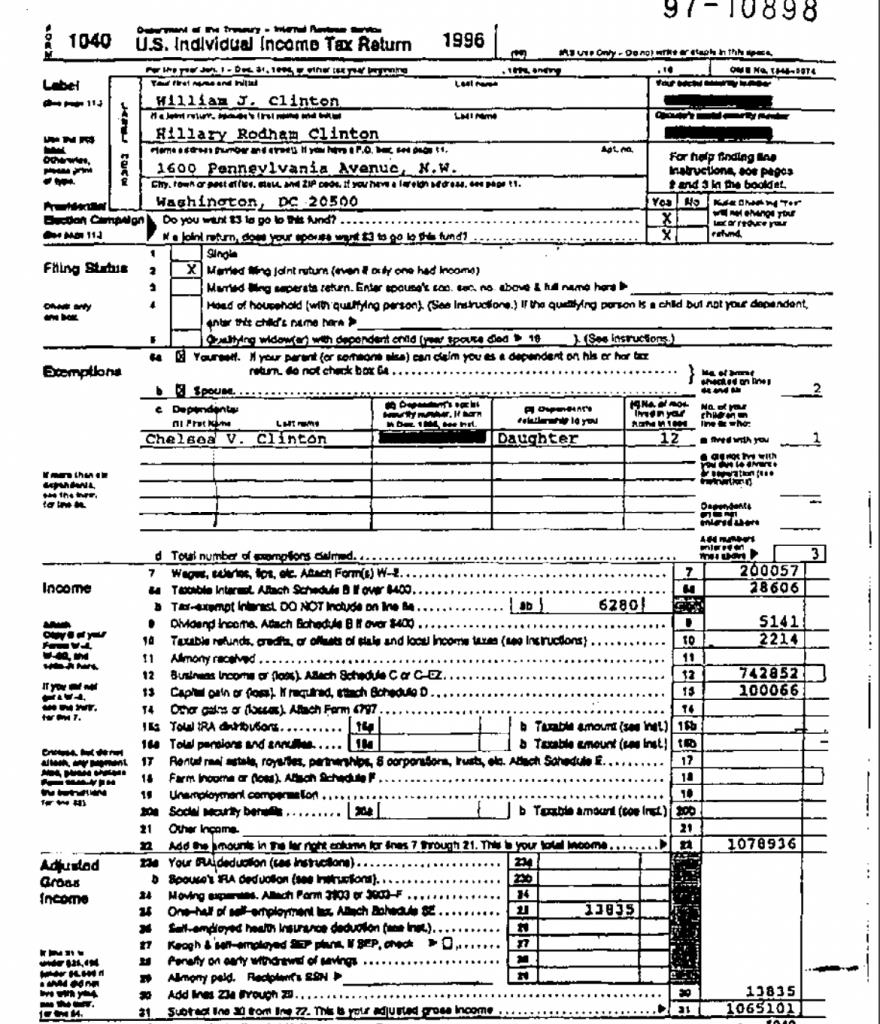
We see the $200,000 presidential salary (it doubled in 2001) and just over $1 million in total income. That puts the Clintons well into the top tax bracket of that year. But only 1/6 of their interest was tax-exempt. It seems like they would have benefitted from more municipal MMFs instead of savings accounts. Also, the amount of dividends compared to the amount of interest seems really low. Maybe they should have been investing a lot more aggressively. That $100,000 in capital gains was all from Boston Harbor Trading Company, and it doesn't seem very diversified. The business income was all from Hillary's book, it seems.
The most impressive thing on this tax return was the $545,000 in itemized deductions. I couldn't find a Schedule A to break that down, though. Interestingly, the Clintons' income went way up after he left office. Between 2000 and 2007, they earned over $109 million, half of which was from President Clinton's speeches. A president's $400,000 salary could be much less than what a high-earning physician can make, but you've got to love going on the speaking circuit afterward!
More information here:
My Favorite Physicians That Became Politicians: The History of Docs in Congress
George W. Bush's 2000 Tax Return
I thought this one would be a lot more interesting, given that, at one point, George W. Bush was wealthy enough to own the Texas Rangers baseball team. Only $900,000 in income? I thought this guy was rich.
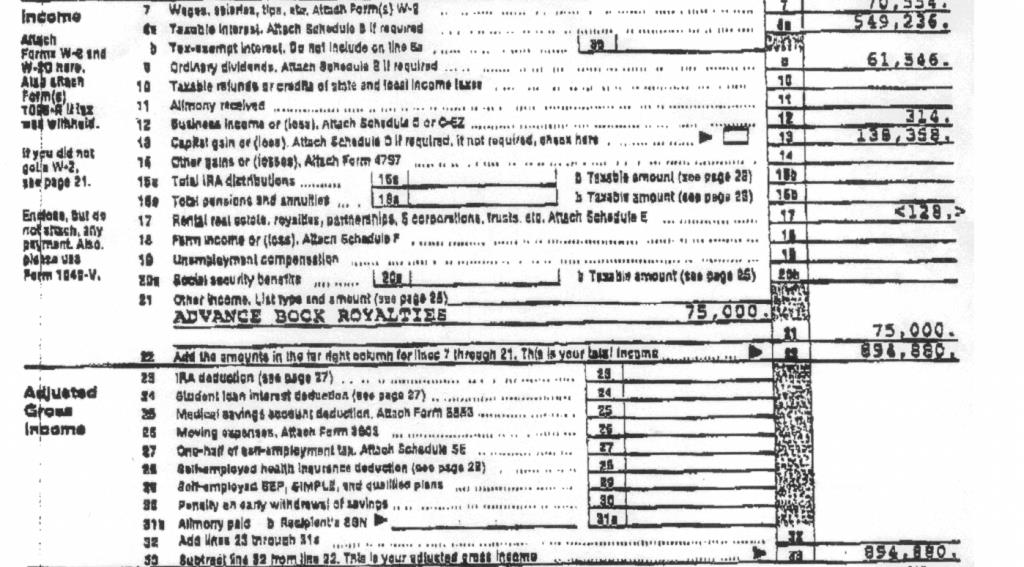
It turns out that he only put $600,000 into the Rangers, and despite an awesome return ($14.9 million), he's apparently not that rich. Still, $500,000 in taxable interest (again, somebody needs to tell these folks about muni bonds) requires a lot of capital.
Sarah Palin's 2006 Tax Return
Being from Alaska, I couldn't resist peeking at Sarah Palin's tax return from the year she was elected governor and before she was the 2008 Republican nominee for vice president. It's quite a bit more humble than the last couple of presidential returns.
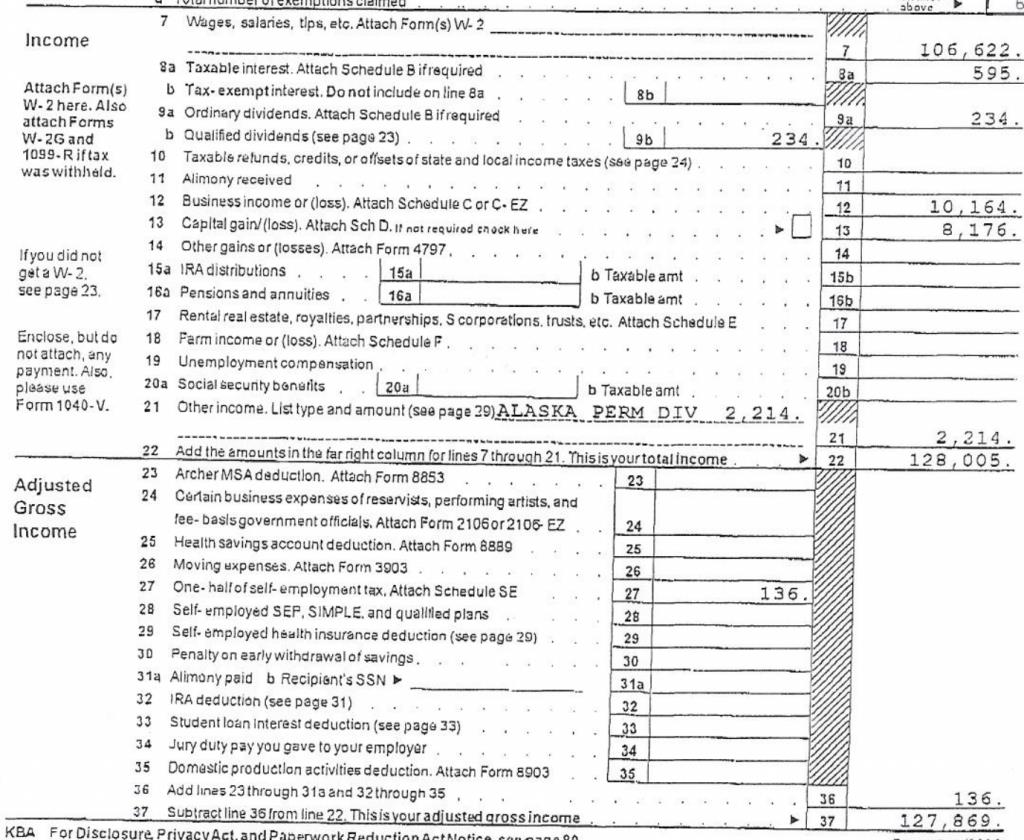
Her husband, Todd, made $21,000 fishing and $2,000 racing snowmobiles (a low-profit margin there given that he spent $266 on decals), and they donated almost $5,000 to charity, including a crib. This return looks an awful lot like that of many other Alaskans.
More information here:
Stock Market and Elections
Mitt Romney's 2010 Tax Return
Now let's get into something more interesting, like Mitt Romney's 2010 return. The former presidential candidate and current US senator from Utah is somebody who knows how to make money!
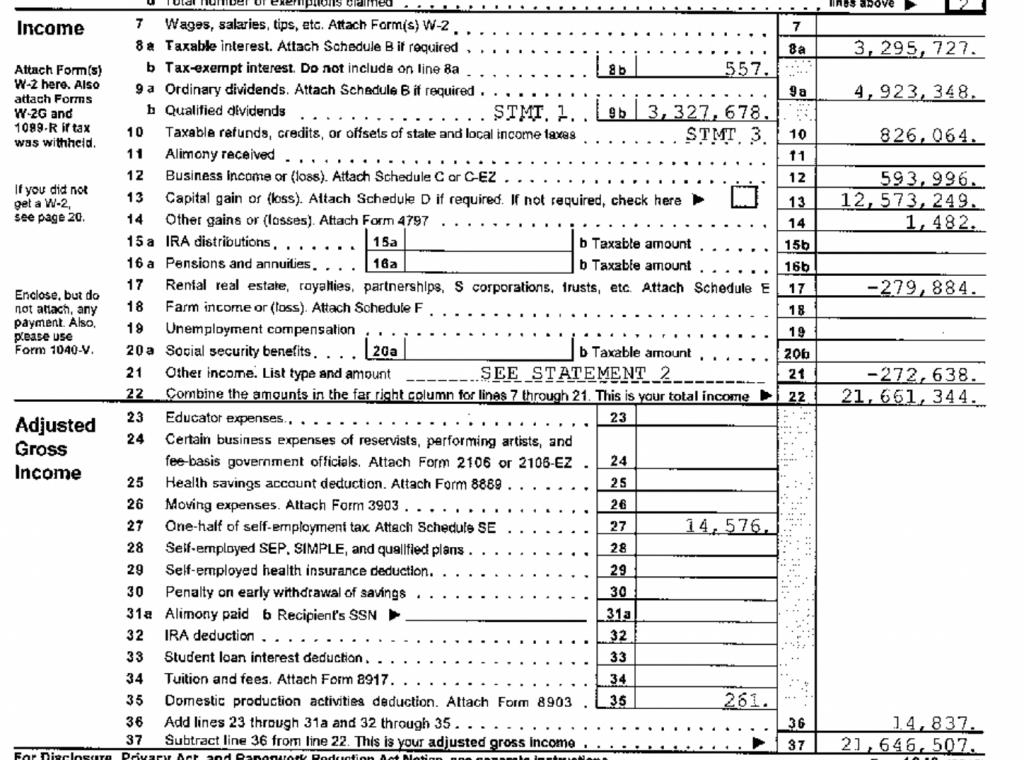
Who wouldn't like an AGI of $21 million? Millions in interest and millions in dividends. Once more, why doesn't anybody tell all these politicians about muni bonds? He gave $3 million to charity, though, so that'll help the tax bill (and the charity). Lots of interesting stuff in here that one can learn about the wealthy by looking at all of the trusts and investments. I never did figure out what that $12 million capital gain was; it wasn't on the Schedule D. Still, he only paid $3 million in taxes. That doesn't seem all that high on $21 million in AGI, but it'll look like a king's ransom when we get down to Trump's return.
Barack Obama's 2003 and 2015 Tax Returns
Now that we've seen an interesting return. Let's look at a really boring one: President Obama's 2003 return from when he was still an Illinois state senator.

Seriously, can you leave more lines blank on your tax return? And didn't you have a dime in the bank? I don't know if the Obamas had anything invested at that point, although they did have a nanny. Seriously, white coat investors: if your return looks like this, you are not winning this financial game. Luckily the Obamas got better at it as time went on. Here's the 2015 return.
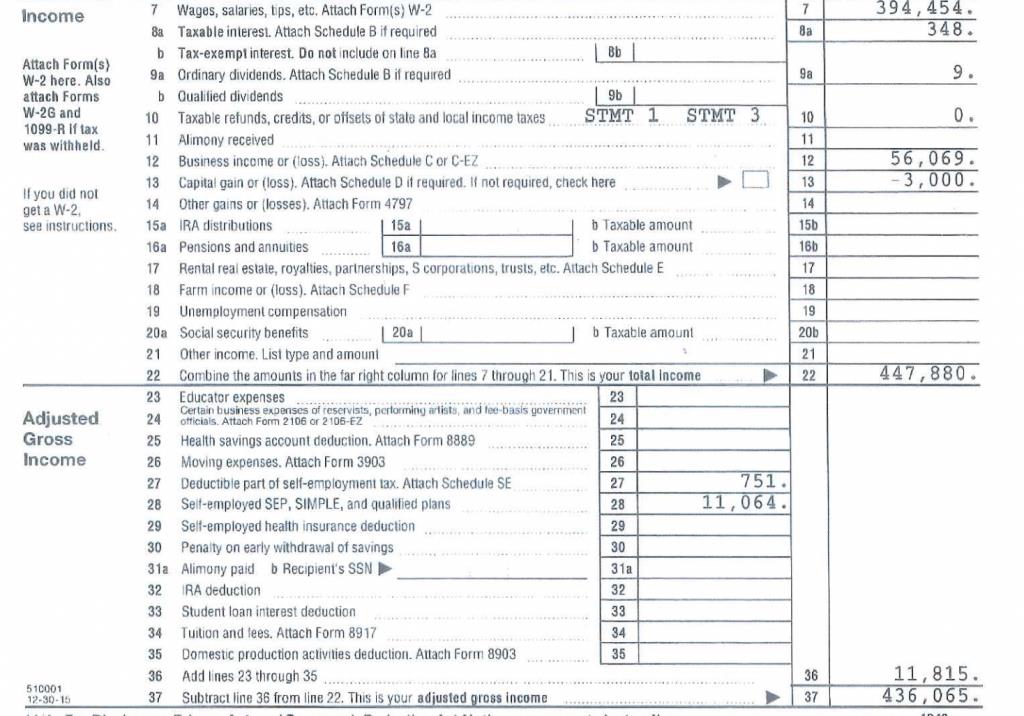
At least they had a little savings 12 years later. I can't quite figure out how they ended up with a loss investing in Treasury notes, but I guess he never claimed to be a great investor. He clearly wasn't investing in the TSP. Still, it's got to be pretty cool to put 1600 Pennsylvania Avenue on your tax return.
More information here:
How Tax Brackets Work for 2023
Donald Trump's Tax Returns
Now, for the real fun. There are seven tax returns out there for President Trump, 2005 and then 2015-2020.
2005 Total Income: $49 million; Total Tax: $38 million ($31 million in AMT!)
For anyone who says Donald Trump doesn't pay taxes, well, check out that one! That must be one of the worst effective tax rates I've ever seen. It gets even more interesting when you dive in.
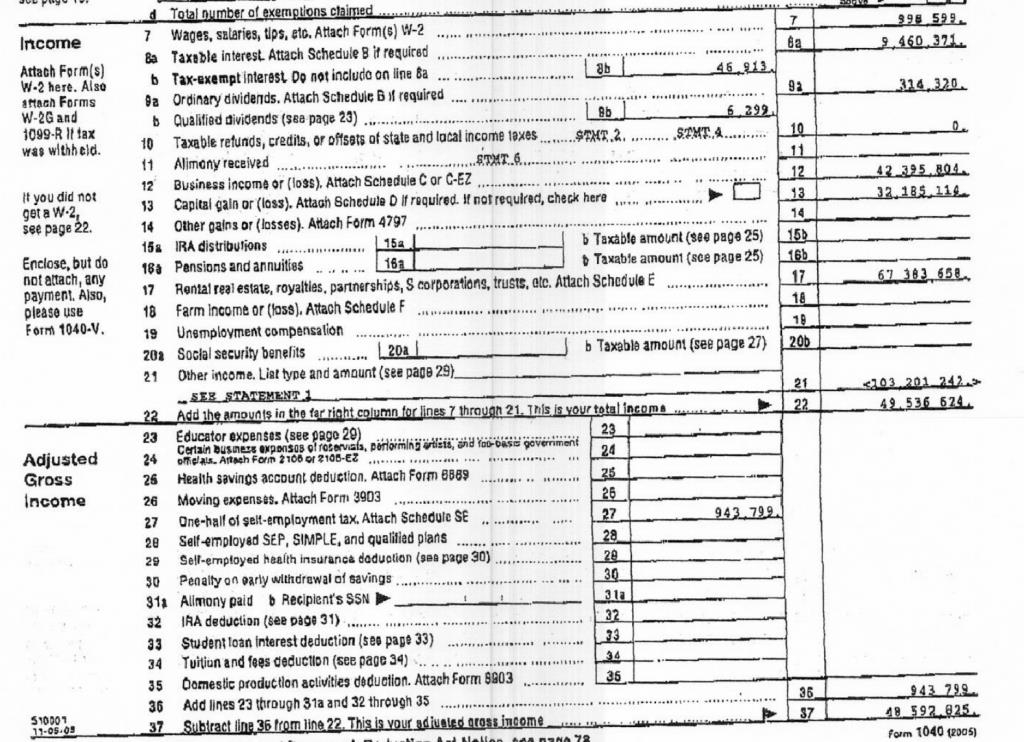
That's $9 million in interest (again, only $46,000 in tax-free interest), $42 million in business income, $32 million in capital gains, and $67 million in real estate income. But the real head-scratcher here is the $103 million loss. Too bad we don't get to see Statement 1. That's why the effective tax rate is so high, though. It's because that loss comes out of total income, but clearly, it wasn't all useable in 2005. Presumably, he's been carrying it (and/or other losses like it) for years. Lesson to learn? Make lemonade out of lemons by using your losses to offset your income where it is allowed to do so. And know how the Alternative Minimum Tax (AMT) works. It was apparently designed specifically for people like Donald Trump.
2015 Total Income: $31 million; Total Tax: $0
What? How does such a rich guy pay $0 in taxes? Well, it's all about those losses, I suppose.
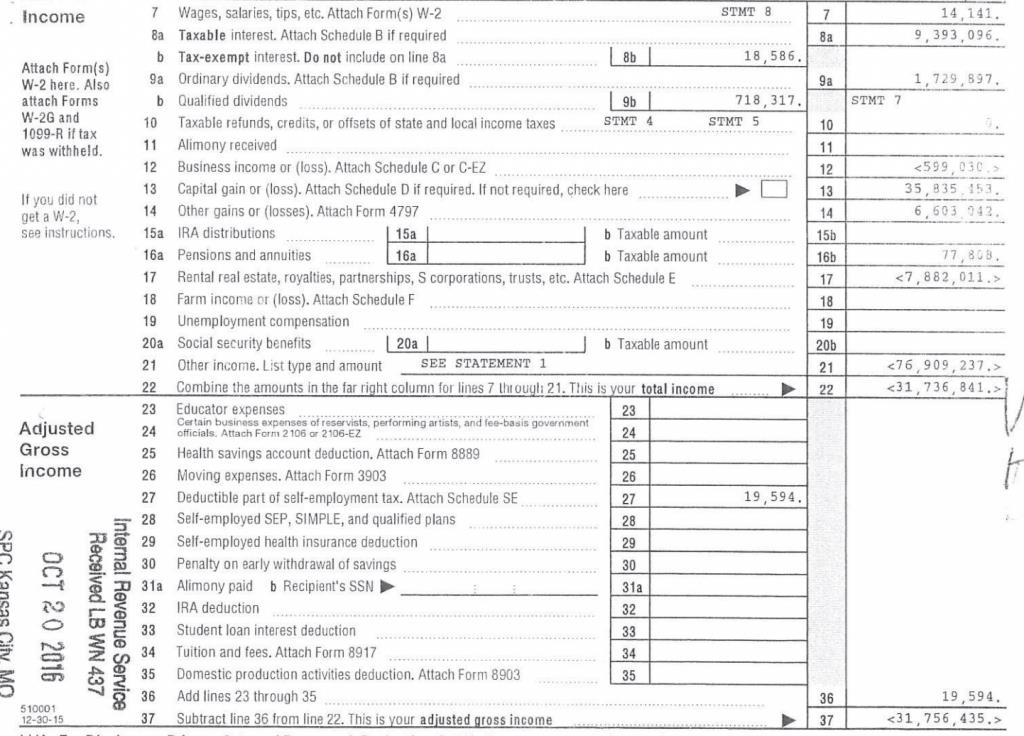
The businesses lost money. The real estate lost money. He's carrying forward $77 million in losses, and yet he's still got $35 million in capital gains and he still donated $21 million to charity. This return is a lesson in the power of being a real estate professional. Using real estate losses against ordinary income can really reduce your tax bill.

As for his returns from 2016-2020: These returns are more of the same: losses being carried forward year to year and canceling out income. Some years, the businesses made money; in some years, they didn't. The real estate usually lost money. Usually, something was given to charity ($1.1 million in 2016, $1.8 million in 2017, $500,000 in 2018 and 2019, and $0 in 2020), but it wasn't exactly an impressive amount given his reported net worth. You can learn a lot about what someone values from their tax return. Interestingly, despite the fact that he paid $0 in income tax in 2020, he still had to pay his payroll (self-employment) taxes to the tune of $272,000.
Even not counting the real estate losses (presumably driven by depreciation deductions), the returns are pretty revealing about the success of Trump's businesses. Just look at the business income:
- 2005: $42 million
- 2015: -$599,000
- 2016: $8.8 million
- 2017: $1.4 million
- 2018: -$430,000
- 2019: -$225,000
- 2020: -$30,000
Not only does Trump not appear to be a very successful businessman in recent years, but his businesses are in serious danger of being reclassified by the IRS as a hobby if recent returns keep up! It's a good thing he makes a high eight figures in interest every year. At any rate, if you're interested in learning how to reduce your tax bill, these tax returns are a pretty good textbook.
Joe Biden's 2020 Tax Return
No better place to end our review than with President Biden's 2020 return.
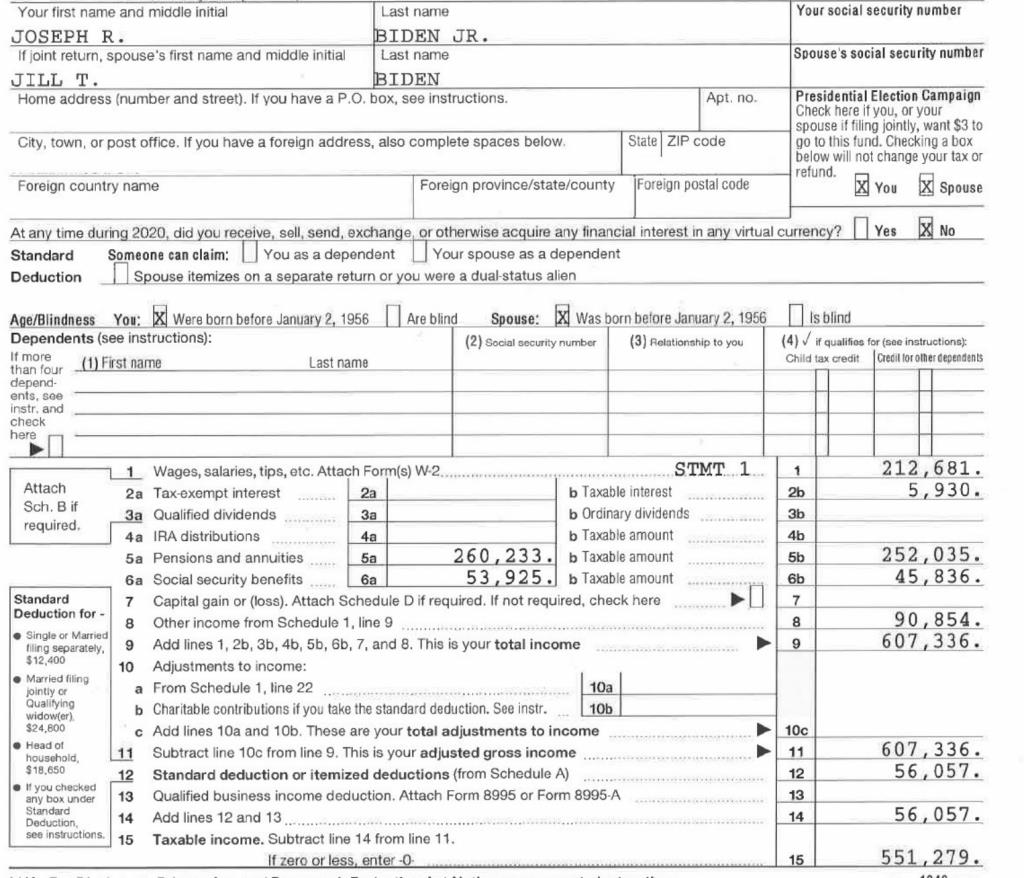
Many of you are making more than the Bidens did in 2020. I also find it illuminating that we have a president who is old enough to be receiving a pension and Social Security while in office. Incidentally, the Bidens spent about 1/6 of their income on household employees and gave about $30,000 to charity. Apparently, older tax returns are more interesting.

You've learned here at WCI about S Corps. Well, the Bidens used to have much higher income: $11 million in 2017, mostly from an S Corp that would seem to sell Joe Biden mugs and T-shirts. However, that income is probably mostly from speaking gigs and book sales, which raises the question of why it paid the President so little in wages. I mean, $720,000 in wages on $10 million in income is probably a little lower ratio than most tax preparers would recommend for your S Corp.
There is a lot to be learned from looking at tax returns—for a presidential candidate or anybody, really. Not only can you learn a lot about a person and what they value, but you can often learn a few techniques that you can use yourself.
What do you think? What tax reduction techniques have you learned from reviewing presidential candidate tax returns? Do you think tax returns from presidential candidates should be released? Comment below!
The post Lessons Learned from Trump’s (and Other Presidents’) Tax Returns appeared first on The White Coat Investor - Investing & Personal Finance for Doctors.
||
----------------------------
By: The White Coat Investor
Title: Lessons Learned from Trump’s (and Other Presidents’) Tax Returns
Sourced From: www.whitecoatinvestor.com/lessons-you-can-learn-from-trump-presidential-tax-returns/
Published Date: Wed, 18 Jan 2023 07:30:32 +0000
Read More
.png) InvestingStocksToolsClubsVideosPrivacy PolicyTerms And Conditions
InvestingStocksToolsClubsVideosPrivacy PolicyTerms And Conditions
